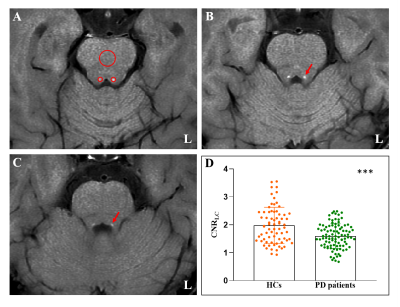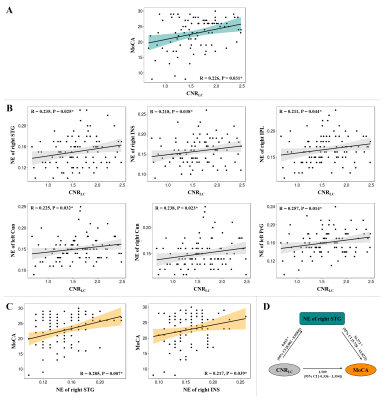Cheng Zhou1, Tao Guo1, Jingjing Wu1, Xueqin Bai1, Xiaojun Guan1, and Minming Zhang1
1Zhejiang University, Hangzhou, China
1Zhejiang University, Hangzhou, China
This study demonstrated that, in addition to dopamine
deficiency, the degeneration of LC is another important pathway for PD clinical
manifestation through associating with the disorganization of functional
topology.

Figure 1. Comparison of CNRLC between the HC and
PD groups.
(A) Signal
intensity measurements of the LC (two small red circles) and pontine (a big red
circles) from a HC; (B) and (C) The location of LC in continuous layers (red arrow);
(D) Significantly decreased CNRLC was found in PD group when
compared with HC group.
CNRLC:
Contrast-to-noise ratio of the locus coeruleus; HC: Healthy control; PD: Parkinson's
disease; L: Left; ***: P < 0.001.

Figure 3. Correlation analysis among CNRLC,
network attributes, and MoCA score in PD group.
(A)
CNRLC was significantly correlated
with MoCA score in PD group; (B) CNRLC was significantly
correlated with the network attributes of cognitive
and motor related regions in PD group; (C) Network attributes of
two cognitive related regions were associated with MoCA score in PD group;
(D) Mediation analysis showed that damaged NE of STG was
a mediator between LC degeneration and cognitive decline.
